All are noms for the marvelous lifelister I caught while cam trapping with the Codger's wise guidance (or is that wise-guy dance? Hmmmm...).
An oft-elusive raccoon-relative of rocky river canyons, one might not guess ringtails would be found in Sac Valley wetlands. But they are - the Sacto backwaters have become a home.
Perhaps it's because their infamous haven, Sutter Buttes, is nearby. Or, maybe it's the heaps of yummy year-round forage for them in the dense woods and waterways (small rodents, insects, fruits, berries, birds, eggs...).
Whatever their reason for residence, places that make ringtails happy make us Cali-mammal-huggers happy. The seldom-seen ringer is a Fully Protected Species in California, with dwindling habitat and pocket-populations, and thus a species in need of such sanctuaries.
But, instead of waxing all Wikipedia, I'll just offer up these shots to give you a glimpse into the amazing lemur-like coolness, and curious, cute quickness, of the Bassariscus that visited the muddy rootball and late-night latrine of my Sac Valley set:

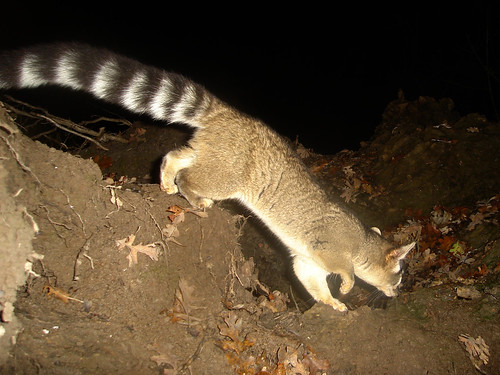

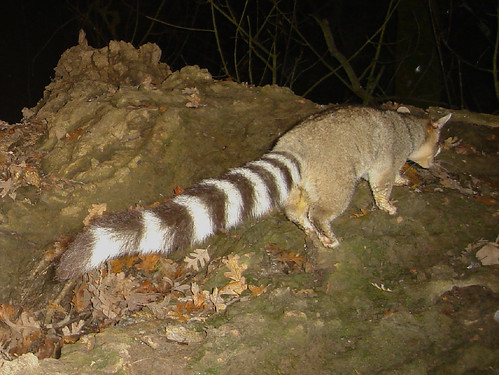
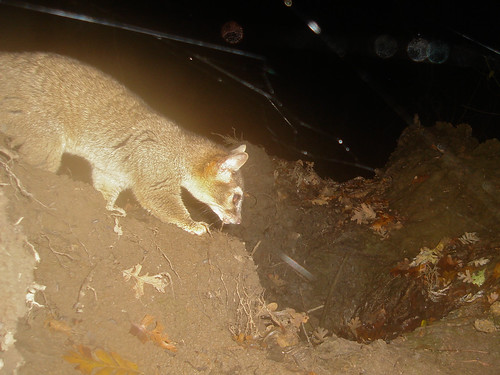
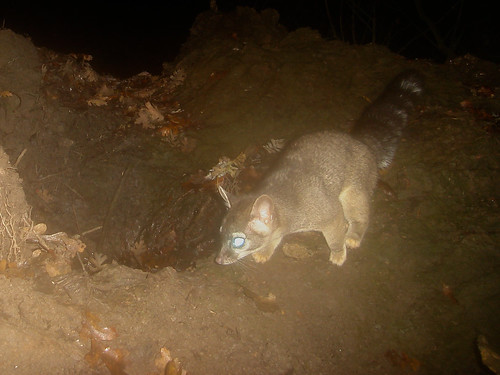
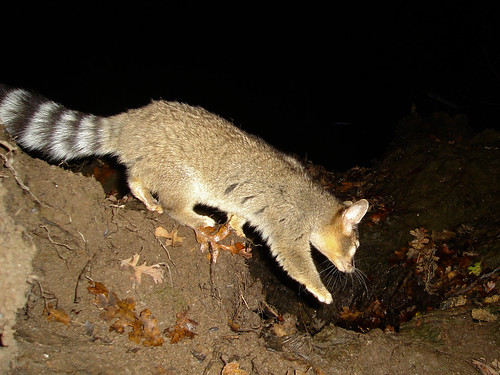
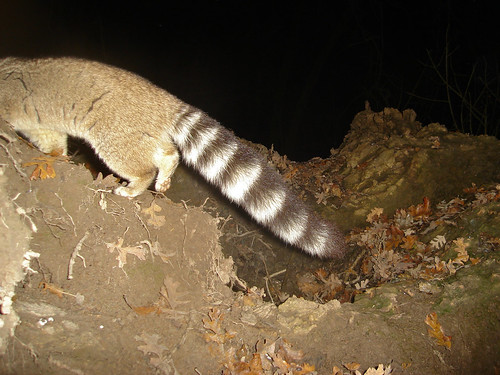
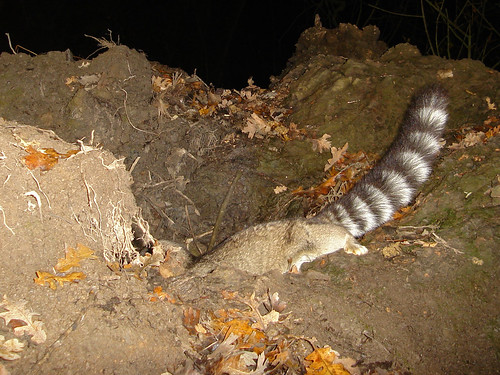
A good first catch of ringtail. And given their character, I might never get enough.
====
References:
- The Nature of a Man (this blog) - California Bayous
- Camera Trap Codger - posts on ringtails
- Wikipedia - Ring-tailed Cat
- Wikipedia - Sutter Buttes

wow! have never seen one on anyone else's blogs around bloggerville!
ReplyDeletepart raccoon, part squirrel, part cat! fascinating! they look almost friendly and domesticated!
Congratulations and I hate you. I thought this might be the mystery critter, but then thought "really in the Sac Valley maybe it is something else," but no you beat me to it and with authority. Damn those are some nice images. All in one visit or did it come by multiple times?
ReplyDeleteVery impressed!
oh, my. WOW what charming creatures and SO exciting you got those shots! 1) hooray, 2) I want one! =)
ReplyDeleteBravo! Great work getting these pics. They're amazing. It's hard for a charismatic macrofaunum(?) to be charismatic, therefore cared about, if no one ever sees one. When I was a kid there was a pair at the Toronto Zoo. For whatever reason, the zoo preferred to call them "cacomistles." They were in a nocturnal exhibit, and among my must-sees.
ReplyDeleteWell done, man!
ReplyDeleteWish we had 'em down here!
Congratulations, a very good catch. You had some excelent luck lately, keep it up :)
ReplyDeleteThose are great shots. There pretty cute and look friendly, wonder if they are!
ReplyDeleteIt's posing for you in that first shot!
ReplyDeleteYou nailed those pictures! Ringtails are one of those species that every camera trapper wants to get an image off. Great shots! Keep up the good work!
ReplyDeleteOooh, I came over here at the suggestion of rockpaperlizard.blogspot.com, and am glad I did. What great photos! You must have been thrilled!
ReplyDelete--Patricia Lichen, www.patriciaklichen.com
Mann, I just love that first picture. You just can't do better than that.
ReplyDeleteIn response to High's comment -- the cacomistle is the Nahuatl (Mexican) name for the closest relative of the ringtail, Basarriscus sumichrasti, which looks a lot like the ringtail but lacks the semi-retractile claws. Some folks use the same name for the ringtail. The Cacomistle is central American in distribution.
Wow, wow, wow! I would have never guessed we had these in CA. I'm so happy you're doing this cam trapping and sharing your finds with the rest of us.
ReplyDeleteThanks much all. Aside from the soul-less pie-eyes, they did come out pretty good. And yes, this ringer does seem to be a bit of a poser. :)
ReplyDeleteJK - this is actually 10 visits. There's either many, many, or an individual lives very near this log and came by almost every night. I'll be setting it again.
texwisgirl - they are known to be quite friendly and have been domesticated as pets in the past. And they range down into Texas. :)
Codge - thanks for the color commentary on cacomistle. That's cool.